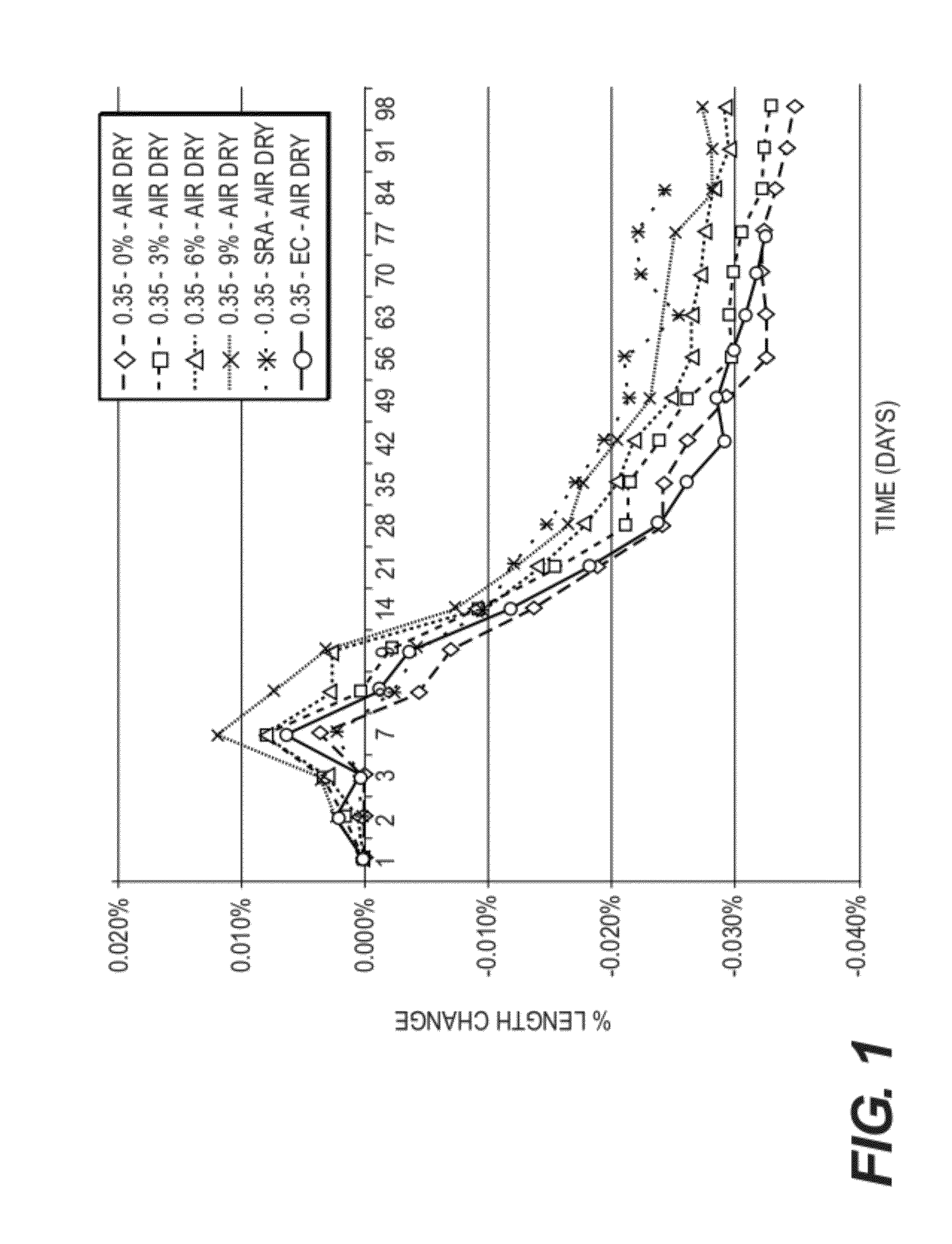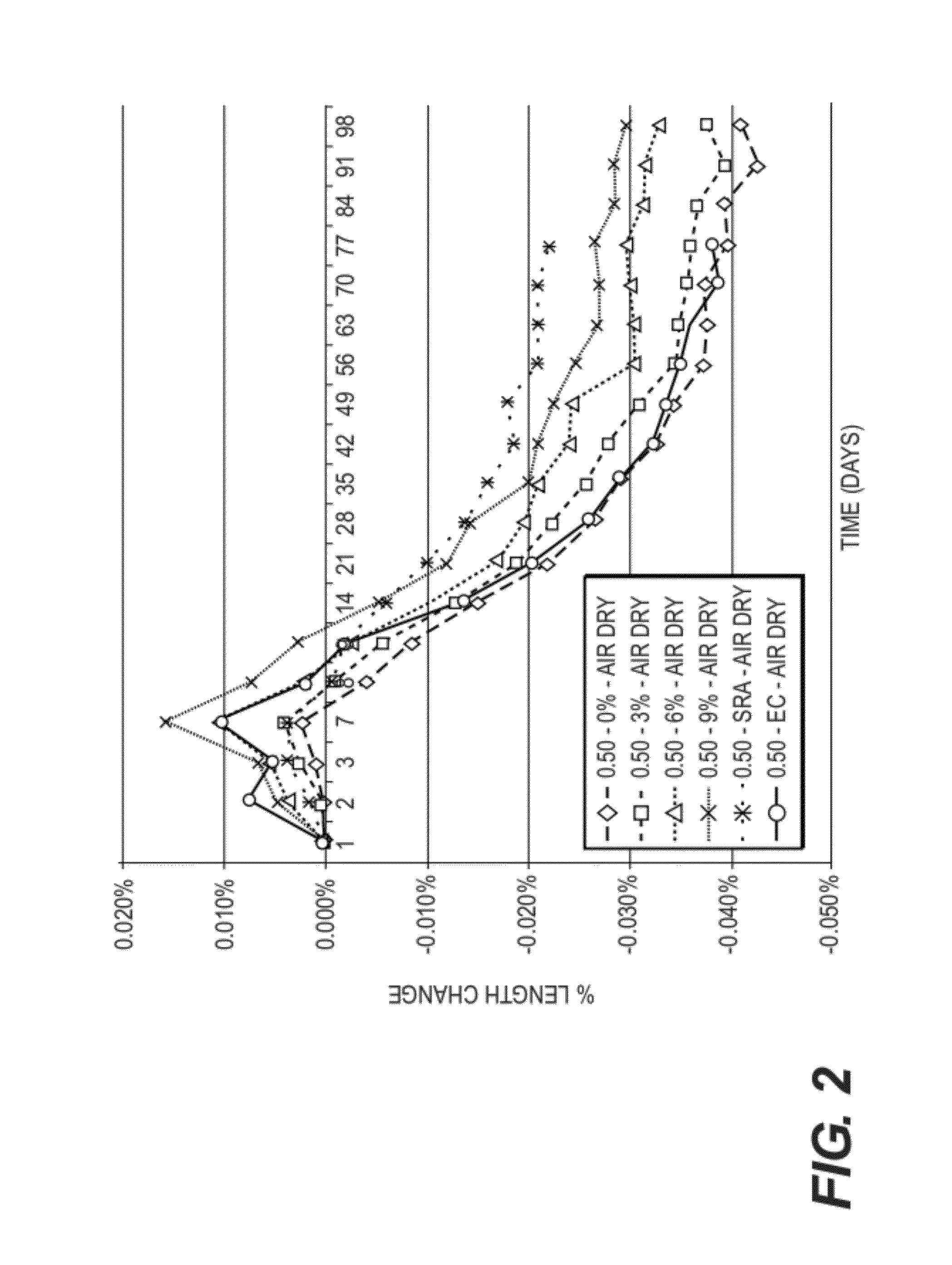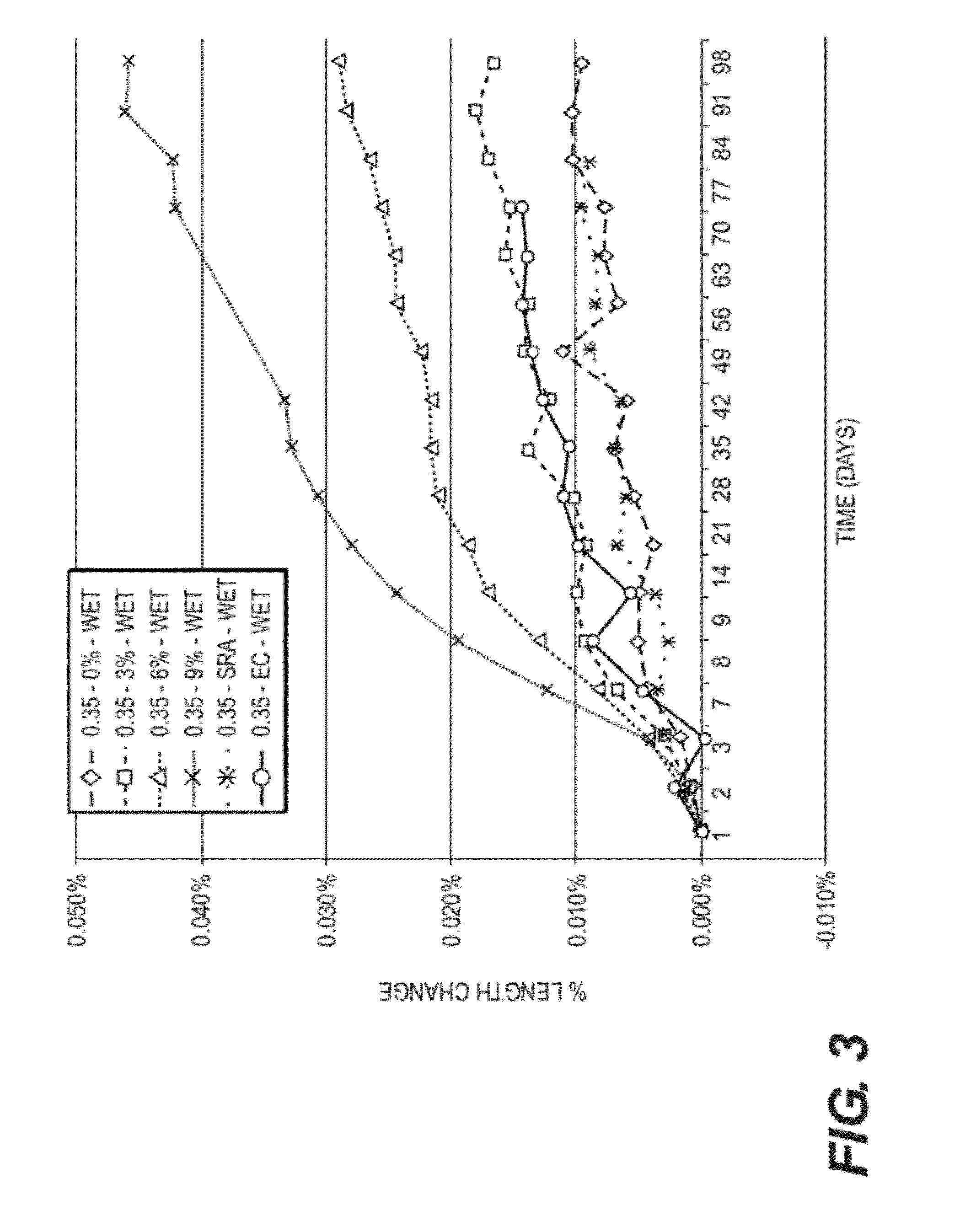Admixtures for Shrink Crack Reduction of Portland Cement-Based Mortars and Concretes
a technology of cement-based mortars and cement-based concretes, which is applied in the directions of special tyres, transportation and packaging, tyre parts, etc., can solve the problems of shrinkage cracking, prove catastrophic, and loss of efficiency and service li
- Summary
- Abstract
- Description
- Claims
- Application Information
AI Technical Summary
Problems solved by technology
Method used
Image
Examples
example 1
[0063]Use of MgO or SRA independently to demonstrate deficiencies addressed by embodiments of the present invention.
[0064]Table 1 shows concrete mixture proportions for mixtures containing MgO, expansive cement (EC), or shrinkage reducing admixture (SRA) as well as the plastic concrete properties. FIGS. 1 and 2 show the shrinkage behavior for a short water cure followed by air drying following the procedure in accordance ASTM C 157, for the 0.35 water-to-cementitious ratio (w / cm) and 0.5 w / cm concretes. FIGS. 3 and 4 show the expansion for the 0.35 w / cm and 0.5 w / cm concretes under constant wet conditions.
TABLE 1Background concrete mixtures with MgO, Expansive Cement (EC), orShrinkage Reducing Admixture (SRA)Avg.PortlandAvg.Avg.UnitDesig-CementMgOECSRASlumpAirWeightnation(pcy)(pcy)(pcy)(gpy)w / cm(in.)(%)(pcf)50-05640000.56.26.2142.350-354717000.55.86.1142.050-653133000.55.66.0142.350-951351000.54.76.0142.250-EC48408000.56.16.8141.750-SRA5640010.55.25.9142.935-06380000.355.46.4144.935...
example 2
[0067]Admixtures in accordance with the present invention were tested. The testing was conducted to demonstrate the performance of MgO with and without combinations of SRA. The base mortar formulas used were at an intermediate w / cm=0.43 as the two used in the previous concrete testing, using MgO by itself. The results of this experiment are as follows:
[0068]Table 3 gives the mortar mixture design for MgO and SRA added alone and combined. FIG. 5 shows the ASTM C 157 shrinkage results for one week of wet curing, and then drying in air, FIG. 6 shows the shrinkage results for only one day of curing and then drying in air (most severe drying conditions).
TABLE 3Mortars with / without MgO or SRA, w / cm =0.43, Cement:Sand = 1:2.6Mix #MgO (%)SRA (%)1 (Ref.)0027.5057.5183.750113.7511602Notes:MgO—Premier 93HR, SRA—Commercial glycol based product. Rheobuild 1000 (NFS based) superplasticizer was used to adjust flow.
[0069]The data show that there was little to no improvement in drying shrinkage with...
example 3
[0070]SAP materials may be useful in shrinkage crack reduction. Two SAP materials were evaluated. The results are as follows:
[0071]Table 4 uses the same MgO mortars as in Table 3 with two different SAP materials being tested in place of the SRA. FIGS. 7 and 8 give the drying shrinkage results for moist curing and air drying and air drying alone. Unlike the SRA, the SAP did not have a significant positive effect on shrinkage performance.
TABLE 4Mortars with / without MgO or SAP, w / cm =0.43, Cement:Sand = 1:2.6Mix #MgO (%)SAP (%)SRA (%)1 (Ref.)00027.50037.50.2 (SAP #1047.50.2 (SAP#2)083.750093.75 0.2 (SAP #1)0103.75 0.2 (SAP #2)01400.4 (SAP#1)01500.4 (SAP#2)017 (Rept#6)3.750.2 (SAP#1)1Notes:MgO—Premier 93HR, SAP#1—Aqua Keep, SAP#2—Evonik Agricultural. Rheobuild 1000 (NFS based) superplasticizer was used to adjust flow.
PUM
| Property | Measurement | Unit |
|---|---|---|
| mean particle size | aaaaa | aaaaa |
| particle sizes | aaaaa | aaaaa |
| shrinkage | aaaaa | aaaaa |
Abstract
Description
Claims
Application Information
 Login to View More
Login to View More - R&D
- Intellectual Property
- Life Sciences
- Materials
- Tech Scout
- Unparalleled Data Quality
- Higher Quality Content
- 60% Fewer Hallucinations
Browse by: Latest US Patents, China's latest patents, Technical Efficacy Thesaurus, Application Domain, Technology Topic, Popular Technical Reports.
© 2025 PatSnap. All rights reserved.Legal|Privacy policy|Modern Slavery Act Transparency Statement|Sitemap|About US| Contact US: help@patsnap.com



